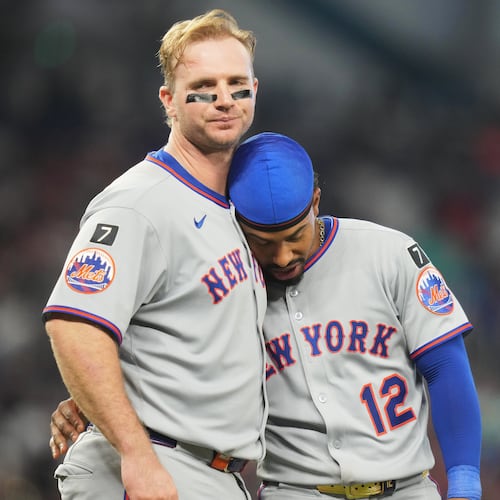I first saw Pete Rose play at Crosley Field in 1963. He was a rookie. I was 8.
Five years later, we sat in my dad’s preferred spot – down low behind third base – on the season’s final day. Pete needed a hit to clinch the batting title, which had become an epic chase. The day before, he’d gone 5-for-5 only to learn that Matty Alou went 4-for-4. On that Sunday, Pete led off the bottom of the first with a double. That did it. It felt as if the Reds had won the World Series.
I saw, in person, Pete in three World Series – twice as a fan, once as a sportswriter. He made the final out of Game 7 against Oakland in 1972. (Fly ball to Joe Rudi, who caught everything.) A bit more oomph and it would’ve been a Series-winning homer. Pete wasn’t a big bopper per se, but he did have a flair.
He became the biggest story of the 1983 Series – like longtime Cincinnati teammates Tony Perez and Joe Morgan, he’d moved to Philly – when manager Paul Owens benched him for Game 3. It was an odd move. Pete had hit .375 in the National League Championship Series against L.A. and would hit .313 vs. Baltimore. My memory of that week was him declining to speak to us media folks before Game 3. That was unlike him. Pete loved to talk.
On June 16, 1985, I covered a Braves-Reds game for the AJC. By then the Reds’ player-manager, Pete didn’t often bench himself. His RBI single off Bruce Sutter with two out in the ninth tied it; the Reds won in the 11th. I asked Pete what pitch he hit. His response was wordless. (He also was eating a sandwich.) He flashed two fingers, spread wide. Splitter. The Sutter special.
I didn’t know Pete the way you know a colleague or a neighbor, but I felt as if I did. I wasn’t a part of his life, but he was part of mine.
When I put a hole in my bedroom wall – I was practicing diving into the end zone by leaping over one twin bed onto the other – my displeased mother covered it with a black-and-white poster of Pete, then in crewcut mode. I stared at that thing for two weeks. I thought the drywall guy would never get there.
He was my second-favorite Red, just behind Lee May, whose nickname actually was the Big Bopper. I got Pete’s autograph. (His signature is on the same baseball as Hank Aaron’s.) When you were around Pete, you mostly watched Pete. He wasn’t just somebody. He was SOMEBODY.
A goodly portion of my 69 years have been spent thinking about Pete. On the day after his death, I maintain that the best description remains my mom’s. “Pete was always a good ballplayer,” she said in 1989, “but he never had any class.”
That was the year Pete got himself banned from baseball. That was the year I stopped making excuses for him. I understand that gambling is a sickness, but I also understand that Pete bet on baseball and lied about it until he fessed up, and even then he acted as if he hadn’t admitted anything.
To the question I’ve been asked most in my professional life – should Pete be in the Hall of Fame? – my answer always has been, “No. He broke the rule you cannot break.” He became a forlorn figure, signing whatever he could sign for whatever someone would pay. Don’t bet on baseball: How hard is that to understand?
Pete wasn’t a major talent. He reached his stated goal – “I want to be the first $100,000 singles hitter” – and kept going. He became the Hit King through force of will. That this self-made man’s life didn’t carry him to Cooperstown is the sport’s most sobering tale.
I wish it were different. As much as I came to dislike what Pete became, I couldn’t dislike Pete. We had, though he never knew it, so much shared history. Such as ...
Game 4, 1973 NLCS, 12th inning: One day after the famous fight with Mets shortstop Bud Harrelson, with the Reds facing elimination and the New York crowd at full roar, Pete – OK, so sometimes a big bopper – hoisted the game-winning homer.
Rounding second – as ever, running hard – he raised his right fist. I was watching on a tiny TV in my college dorm. It was the coolest thing I’d ever seen.
Credit: NYT
Credit: NYT
Credit: TNS
Credit: TNS
About the Author
Keep Reading
The Latest
Featured





